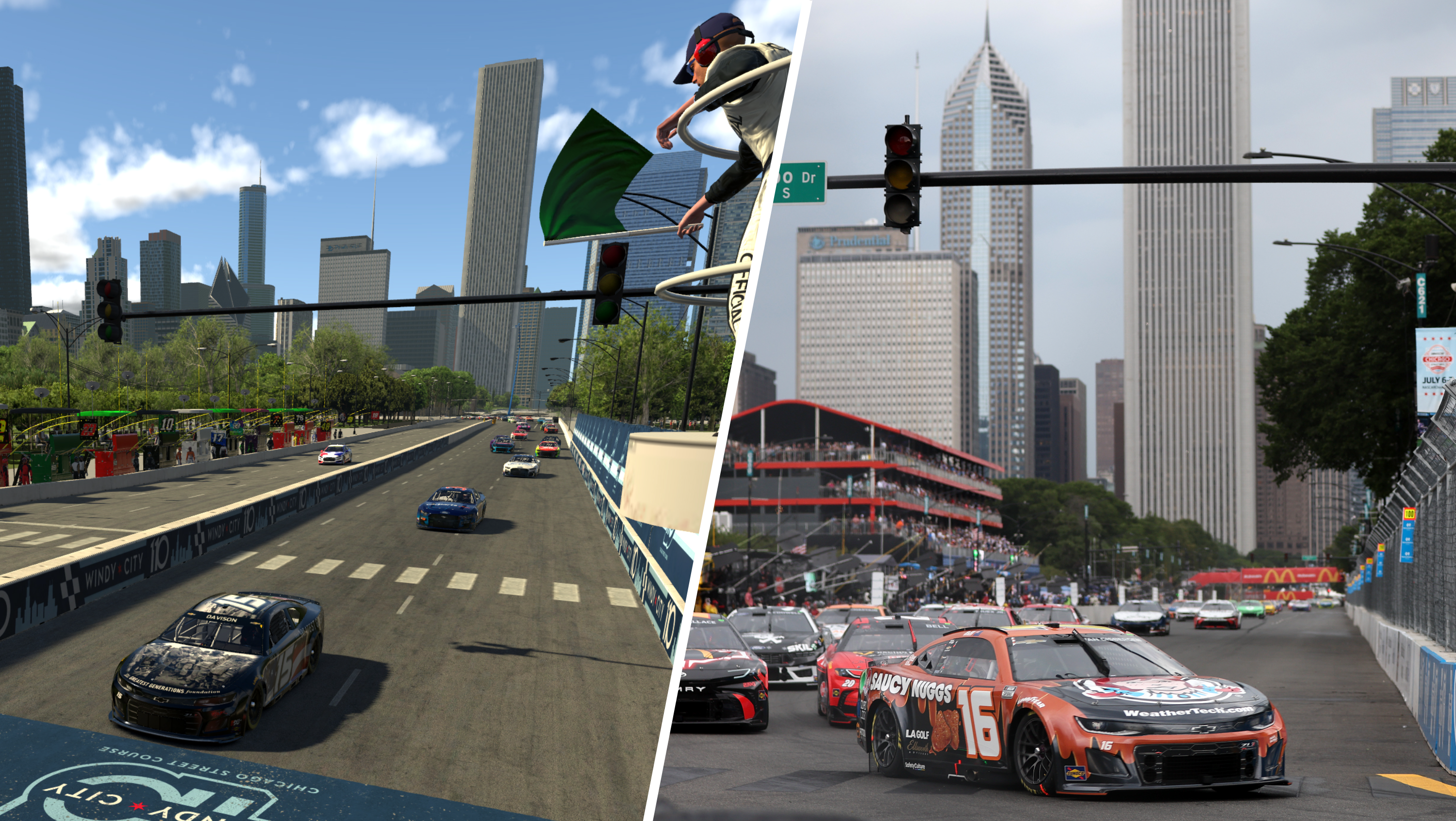NASCAR’s Chicago Street Race became a reality thanks to iRacing’s cutting-edge simulations, transforming virtual designs into a thrilling real-world circuit around Grant Park. This collaboration marks a significant milestone in the fusion of technology and motorsports.
How iRacing brought the NASCAR Chicago Street Course to life

Key Takeaways:
- iRacing’s simulation technology was instrumental in creating NASCAR’s Chicago Street Course.
- The course was first introduced virtually in 2021 before becoming a real race in 2023.
- Laser-scanning technology ensured a precise digital replica of the track.
- Sim racer William Byron transitioned to NASCAR champion, showcasing the impact of sim racing.
- NASCAR executive Ben Kennedy collaborated with iRacing to perfect the course layout.
From Virtual Laps to Real Streets
The NASCAR Chicago Street Race didn’t emerge overnight—it was meticulously crafted in the digital realm before roaring to life on the city’s streets. At the heart of this transformation was iRacing, a sim-racing video game that has become an essential tool for motorsports innovation.
“We pioneered the use of laser-scanners, to go to a track and use them,” said Steve Myers, executive vice president of iRacing. “We can collect millions of points of data by taking laser-scanners around these tracks and get them digitally perfect. Every little bump, every curve, every crack.”
Pioneering Laser-Scanning Technology
Founded in 2003 by designer Dave Kaemmer and John Henry—co-owner of the Boston Red Sox, Pittsburgh Penguins, Liverpool FC, and RFK Racing—iRacing set out to create the most authentic racing simulation possible. Myers, one of the company’s earliest employees, emphasized the goal of providing real-world value to race car drivers.
“We started the company with the idea that we wanted to make the most authentic racing simulation that you could possibly make,” Myers explained. “The way that we did that was to create truly authentic driving models of cars and digitally perfect race tracks.”
Designing the Chicago Street Course
The collaboration with NASCAR began in 2021 when the idea of a street race in Chicago was gaining traction. Myers and his team visited the city, scanning roads around Grant Park to create a digital canvas for the proposed course.
“In 2021, we did the Pro Invitational, where we showed the Chicago Street Course to the world for the first time in the digital space,” Myers said. “It wasn’t even a real race yet at that point. So, when we did that race on TV, it was well-received.”
Reversing Direction for Perfection
NASCAR executive vice president Ben Kennedy played a pivotal role in refining the course. “We worked very closely with Ben Kennedy, who had made site visits and had some ideas of sections of the track that he wanted to see there,” Myers recalled. “We actually had it going the reverse direction, and then Ben was doing laps on iRacing and said, ‘You know what? I think this is going to go better going the other direction.’ So, we switched the direction based on his feedback.”
The result is a 2.14-mile circuit with 12 turns, circling clockwise around Grant Park—a track that embodies both cutting-edge technology and the collaborative spirit of motorsports.
From Sim Racing to NASCAR Stardom
The impact of iRacing extends beyond track design. Drivers like William Byron have leveraged sim racing as a springboard into professional careers. Byron began with iRacing as a teenager and has since become a two-time defending Daytona 500 champion and current leader in the NASCAR Cup Series points standings.
“There is no Dick’s Sporting Goods where you can go buy a race car and do it in your backyard,” Myers explained. “This is done on a computer now. It absolutely has become that gateway for people to experience racing and see if this is something exciting for them.”
The Future of Motorsport Innovation
With the success of the Chicago Street Race—now entering its third year on Sunday, July 6—iRacing’s role in shaping the future of NASCAR is undeniable.
“We’re very proud of our part in the sport and being able to do some of these changes,” Myers said.
As technology continues to bridge the gap between simulation and reality, collaborations like that of iRacing and NASCAR signal a new era for motorsports—a fusion of digital innovation and high-octane racing excitement.











